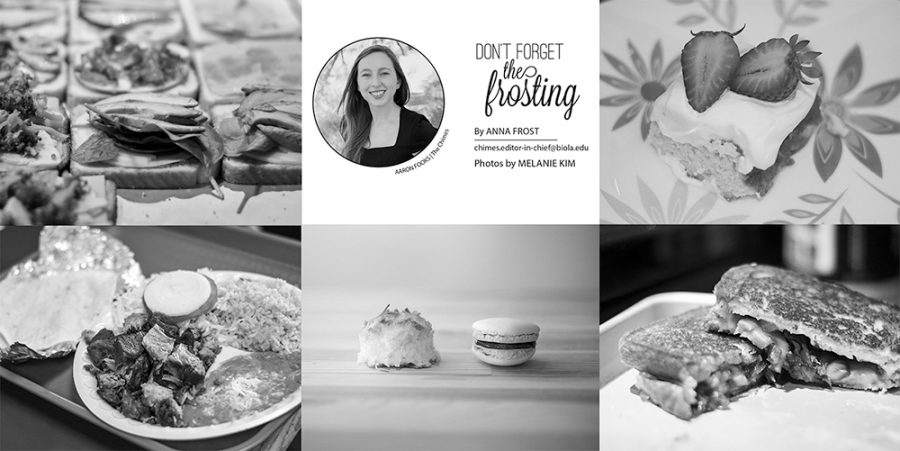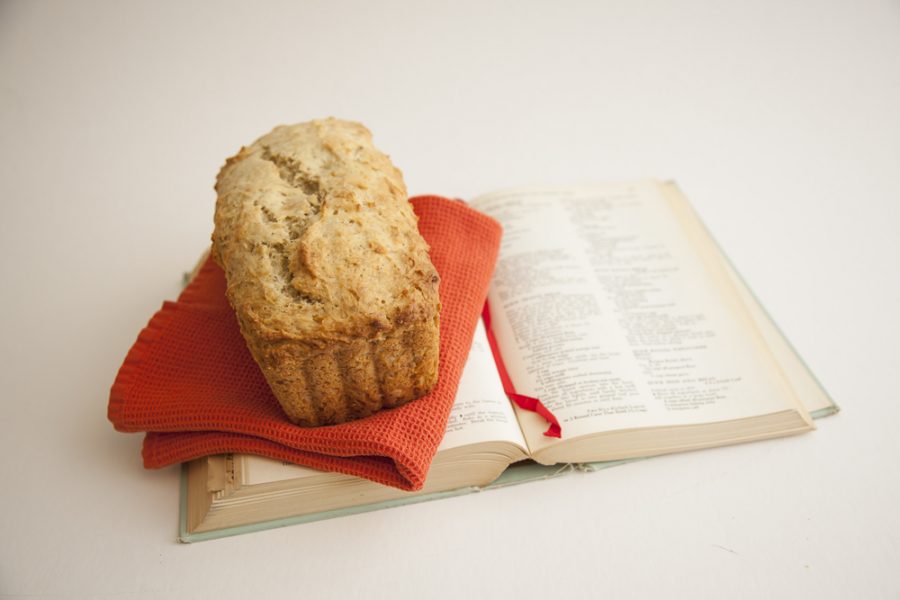Whether or not your grandmother cooks chicken and dumplings, there exists a dish that you eagerly await when visiting grandparents. Greeted at the door by the hospitable aroma of home cooking, everything wrong in life suddenly becomes right again. Chicken and dumplings is an underrated comfort food that evokes similar warm thoughts, no matter where it is eaten. Perfect on a cold winter day or warm summer night, it is meant to be enjoyed with others.
To be perfectly honest, I am not sure my grandma ever prepared chicken and dumplings, but in my memory, what followed the meal was what I always raced into the kitchen to discover. Each visit to my grandparents' home usually included pie for dessert — fresh fruit from their orchard surrounded by a perfectly flaky crust — served warm with vanilla ice cream on top. My grandpa cooked just as often as my grandma, and oddly enough, he was mostly responsible for the pies. These pies are the reason I scoffed at Marie Callender's and Denny's dessert cases as a child.
They are also the reason I am sitting here typing a cooking column at this very moment. Watching my grandparents prepare food that created moments of family togetherness taught me that food is more than sustenance. Food brings people closer and leads the way to dinner table conversations and the sharing of stories. It can be made with love and cause taste buds to rejoice, or it can be thoughtlessly mass produced and only give us a shadow of its full potential.
I began to cook as soon as my parents believed I would not set the kitchen ablaze; in high school my friends and I would spend weekend nights relaxing with a home-cooked meal. I began to refer to a book I picked up at a bookstore in middle school, called “Teens Cook: How to Cook What You Want to Eat.” While everything in it is completely simplistic, this book written by two teenage sisters is proof that good recipes can be found in surprising places.
It would be nearly impossible to count all the times I made chicken and dumplings from this recipe book, mostly because my lovely and finicky best friend decided it was one of a handful of foods she would eat. For our group of friends, this recipe is our pie. It holds so many memories of growing together, of fabulously lazy nights spent watching movies and painting our nails, discussing the futures we are currently living. I pray it will do the same for the budding or already close friendships you have found on this campus.
Chicken and Dumplings
(adapted from “Teens Cook: How to Cook What You Want to Eat”)
serves 4-5 hungry college students
3 tablespoons vegetable or canola oil
2-3 carrots, sliced into about ¼ to 1/2 inch rounds
2-3 stalks celery, sliced to same thickness as carrots
1 onion, diced into small pieces
2 boneless, skinless chicken breasts, cut into small, thin pieces
2 potatoes, cut into small chunks
1 49-ounce can of chicken broth
1/4 cup cornstarch
1/2 cup milk
Before you make this simple dish, you will first need to obtain a medium-to-large cooking pot, one that can hold at least four quarts of liquid, with a lid. I would suggest checking at Savers, but if you or a friend live close, borrowing one from home is even cheaper. I would also recommend finding either a rubber spatula or a wooden spoon; stirring is the number one preventive measure to stop ingredients from sticking to the bottom.
Place the pot you have procured onto the stove and turn the heat to medium. Add the oil to the pot. Once it has heated up, add the carrots, onion and celery.
By doing this, you have just made a mirepoix. Mirepoix is a French cooking term means a combination of carrot, onion and celery cooked together. It will also make you sound incredibly knowledgeable and give people the impression that you know exactly what you are doing. Often used to give flavor to stocks and soups when made from scratch, one can substitute different vegetables or change the ratio depending on the desired outcome. However, I feared reader retaliation in the form of airborne objects if I sent them to find an obscure vegetable like celeriac, so we are sticking to the basics.
Cook your mirepoix for about 10 minutes, making sure to stir every few minutes, but do not feel obligated to stir constantly by any means. The onions should begin to sweat, which means they become translucent. At this point, add the chicken and stir it so all the pieces do not stick together in one giant chicken cluster. Add the potatoes and the broth, turning the heat up to medium-high. Mix together the cornstarch and milk in a small bowl and wait for the pot to boil.
The kitchen will begin to smell delicious — do not be surprised if random strangers wander through the kitchen and look at you with eyes full of awe and hunger. Once it begins boiling, add the cornstarch mixture and stir well and put the lid on the pot. Turn the temperature down to about medium or medium-low; the contents of your pot should be at a simmer — tiny little bubbles should be rising fairly quickly, as opposed to the full bubbles of a boil that rapidly rage towards the surface. There is a difference, I swear. If you have it on a full boil the entire time, your chicken will be tough and the softer vegetables will turn to mush. However, after cooking at a simmer for the next 20 minutes, you will have perfectly cooked chicken and beautifully intact vegetables. At this point, you should make the dumpling dough while you wait for the timer on your phone to ring.
Dumplings
1 cup flour
1 1/2 teaspoons baking powder
1/2 cup milk
Put the flour and baking powder in a bowl, and stir a little bit to mix together. Add the milk, and stir with whatever utensil is handy — forks work very nicely. Stop stirring when all the ingredients have combined into a homogenous, sticky dough. When the aforementioned 20-minute timer alerts you to its completion, remove the lid and drop tablespoon-sized balls of dumpling dough into the pot, quickly. Put the lid back on immediately and set your timer for another twenty minutes. This is very important: Do not remove the lid from the pot until that timer finishes. In order for the dumplings to cook properly, the lid needs to be there to stay on and create steam. Dumplings that are victims of removed lids tend to be have a thick, gluey texture instead of being light and fluffy; you alone have the power to stop this terrible crime against innocent dumplings.
When your timer finally sounds, turn the burner off and move the pot to a different, unused burner. This stops your meal from continuing to cook, since the burner it was on will take a while to cool off. Serve in bowls, share with friends and, as the great Julia Child always said in parting: Bon appétit!










